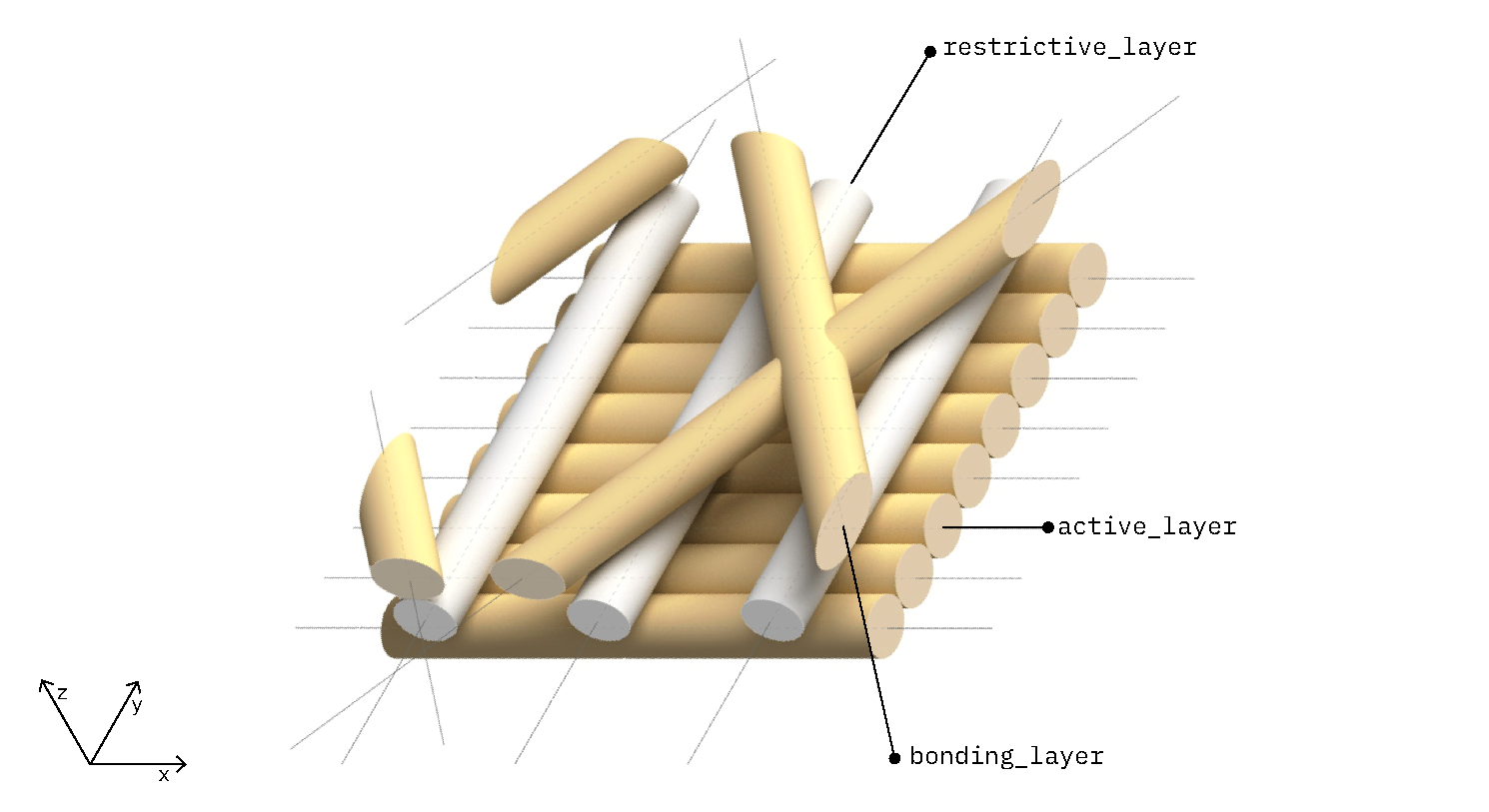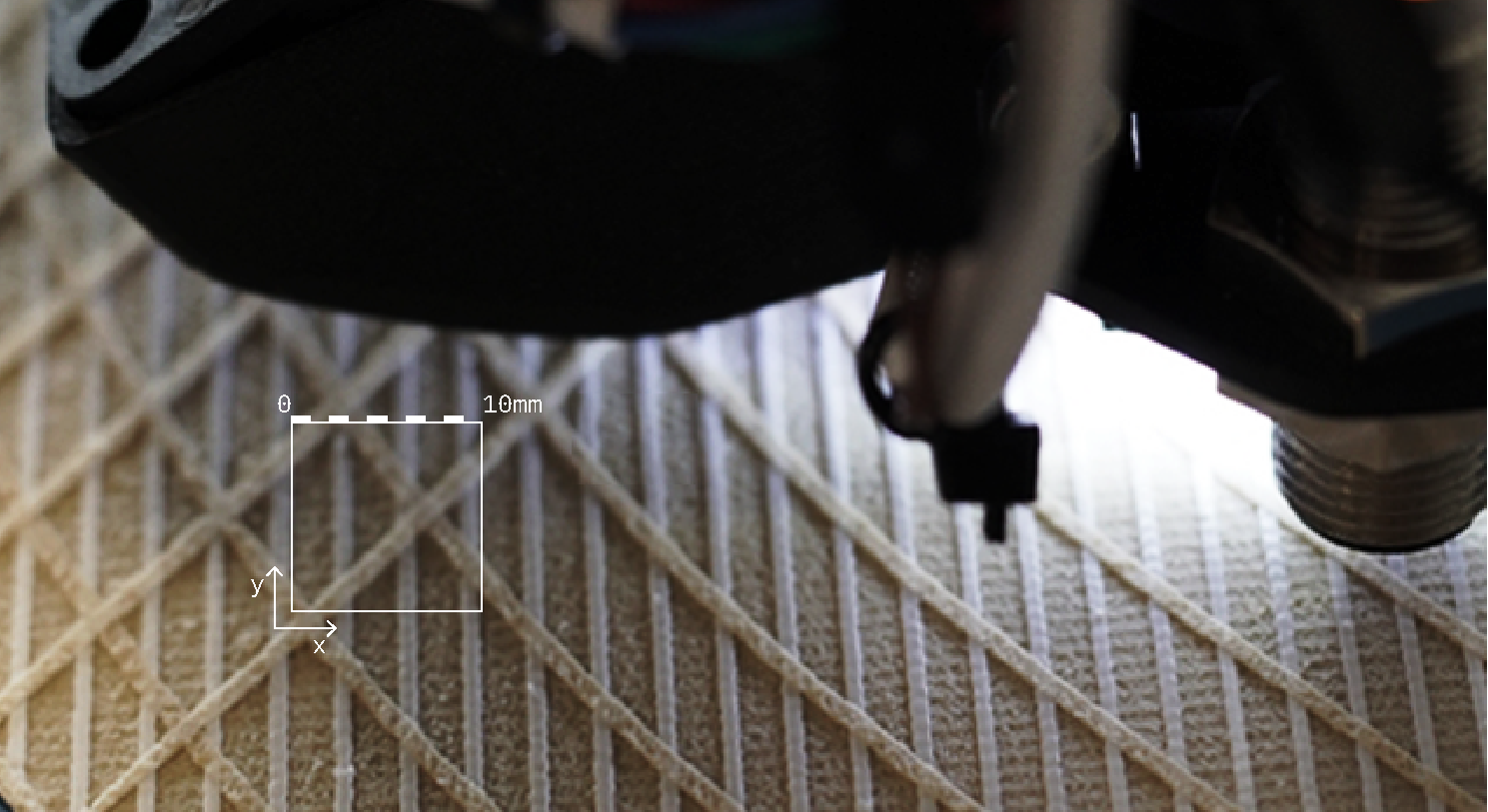1. 2_SOLAR_GATE
//date_ june 2023
//location_ livMatS Biomimetic Shell, Freiburg/Germany
//team_ material programming group at ICD Stuttgart/Germany
//methods_ 4d-printing
>....The Solar Gate is a weather-responsive shading system that regulates the climate of the livMatS biomimetic shell by shielding the interior from high heat loads in summer while allowing solar gains in winter.
The passive adaptation of the facade is based on the biomimetic principle of moisture-controlled opening and closing of plant cones, which is triggered by the hygroscopic property and anisotropic structure of the material.


4D-Printing (additive manufacturing of materials that can perform dimensional changes in response to external stimuli) was used as a method to replicate the double-layered anatomical structure of a pinecone. Here, an active hygroscopic cellulose layer serves as the actuator, which, in bond with an inextensible restrictive layer enables shape-change of the bilayer structure upon moisture change. Printing parameters, such as layer-thickness, layer-orientation, layer-density and filament properties, such as chemical composition and moisture content all dictate the pre-programmed movement of the element, and could thus be perfectly tuned for the site-specific climate and sunlight conditions of the livMatS shell in Freiburg, Germany.
 ©
icd/itke/intcdc university of stuttgart
©
icd/itke/intcdc university of stuttgartThe hygroscopic nature of the 424 bio-based bilayer elements allow them to autonomously respond to changing weather conditions without the need for mechanical sensors or operational energy. Ultimately, the material functions as the machine.

©
conné van d´grachten

©
conné van d´grachten